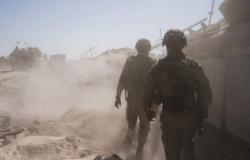An investigation by the New York Times has shed light on a specific type of brain damage found in the brains of soldiers Navy SEALs Die by Suicide.
A military laboratory was able to analyze the brains of eight Navy soldiers who had committed suicide in the last 10 years. The analysis found distinctive damage resulting from repeated exposure to explosions in every brain tested.
The peculiarity is that the explosions were not necessarily the consequence of conflict: often, and in most cases, retrospective analysis has verified that they were explosions detonated during training.
Stories of lives turned upside down
The stories collected by the NYT are dramatic: at least a dozen Navy SEALs are deaths by suicide in the last 10 yearswhile still in the army or soon after leaving the uniform. Family members tell of people who have completely changed, often sleepless or violentbarely able to perform minimal tasks.
The case of David Metcalf, who committed suicide in his garage in North Carolina in 2019, after nearly 20 years in the Navy, is emblematic. Shortly before he died, he had arranged a stack of books on brain injuries next to him and taped a note to the door that read: “Memory gaps, failure to recognize, mood swings, headaches, impulsivity, fatigue, anxiety and paranoia I was not what I was, but I am what I have become. Each of these symptoms is getting worse.” Then he shot himself in the heart, to leave his brain intact.
In the dark about everything
The laboratory that performed the brain analyses and published the related studies (still ongoing) is a Department of Defense Laboratory in Maryland.
The NYT claims that lab privacy guidelines and poor communication within the military bureaucracy kept the test results hidden for years, until the Times itself informed the Navy of the lab’s findings about the SEALs who died by suicide.
Even among the living
The Navy stories told by the NYT are similar: theaverage age is 43 yearseach of them deployed in combat multiple times, but none wounded by enemy fire. All had spent years firing a vast arsenal of weapons, blowing doors open with explosives. Around 40 years oldalmost all of them began to suffer from insomnia and headaches, memory and coordination problems, depression, confusion and, sometimes, anger.
Evidence suggests that this type of damage may be equally widespread among SEALs. still alive. A Harvard study published this spring scanned the brains of 30 special operators and found an association between blast exposure and altered brain structure and impaired brain function. The more blast exposure the operator had, the more problems health and quality of life referred.
It’s not “post-traumatic stress”
The military recognizes that traumatic brain injuries are the most common injuries resulting from recent conflicts. But it is difficult to understand how many injuries are due totraining. There are signs that the damage may come from a wide range of weapons.
Shock waves can kill brain cells initially without causing symptoms: but over time the effects can add up.
Doctors treating wounded soldiers diagnose them psychiatric disorders that do not take into account the underlying physical damage. Much of what is classified as “post-traumatic stress disorder” may actually be caused by repeated exposure to blasts.
It’s not CTE
The specific damage reported to the Navy Seals is not the «chronic traumatic encephalopathy» (CTE), the syndrome found in football players football o rugby and in other athletes who have been repeatedly hit in the head.
It is something new, even if the effects on the lives of those affected are reminiscent of CTE, with sensational cases of suicide or lives turned upside down.
Brain fluid bursts into bubbles
The damage was described as a scar tissue that forms between brain tissues of different densities or stiffnesses: a damaged line that appears to have been caused by the repeated crash of shock waves. In practice, when energy waves propagating through the brain bounce off the boundaries of tissues create a vacuum that causes brain cells to explode into bubbles of steam. Hence the wavy scars.
The lab’s research team found this damage in veterans repeatedly exposed to blasts, but not in the brains of civilians, or veterans exposed to a single powerful blast (such as a roadside bomb). The lesions were called “astroglial interface scars.”
A Widow’s Work for Research
The studies, the NYT reports, got underway thanks to the work of a widow, Jennifer Collinswhose husband, retired Chief Petty Officer David Collins, was a SEAL for 20 years and died by suicide in 2014, just over a year after leaving the Navy.
In fact, few families know about the existence of the laboratory and when it comes to having a brain analyzed, decisions must be made quickly: the brain tissue deteriorates rapidly and in many cases it arrives late. Mrs. Collins has acted as an intermediary between families and the laboratory over the years, ensuring that science has brains and allowing research to progress.
Friends with suicidal tendencies
The men who died by suicide represent only a small fraction of the career SEALs who show signs of brain injury after years spent between blasts. Several SEAL veterans have said in interviews that many of their former companions team are now divorced and struggling with depression, paranoia and substance abuse, all of which can be caused by deteriorating brain function. Desperate calls from friends with suicidal tendencies They are common, they told the NYT.
Act on training
The next step is for military officials to acknowledge the problem, the NYT writes: “We have a moral obligation to protect the cognitive health and combat effectiveness of our teammates,” Rear Admiral Keith Davids, commander of Navy Special Warfare, which includes the SEALs, said in a statement. He said the Navy is trying to limit brain injuries “by limiting exposure to blasts and is actively participating in medical research designed to advance understanding in this critical area.”
According to the NYT, the Department of Defense, which spends nearly $1 billion each year on brain injury research and many billions more to train and equip troops, does relatively little to ensure that the latest scientific findings on brain injury inform the training practices.





